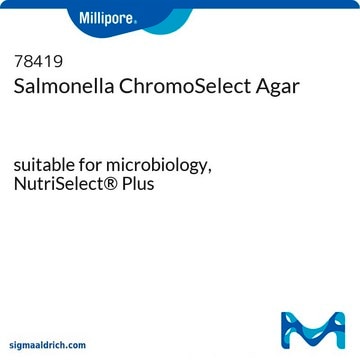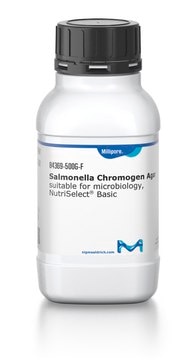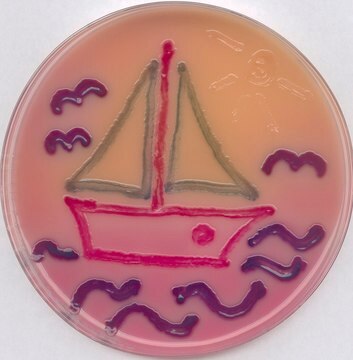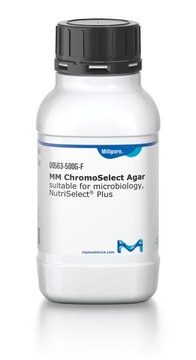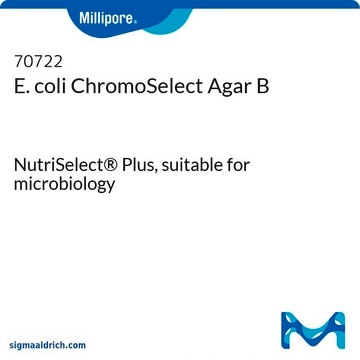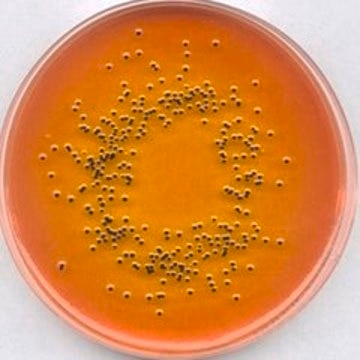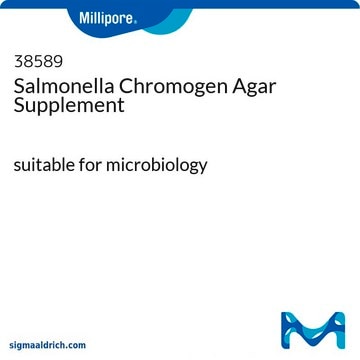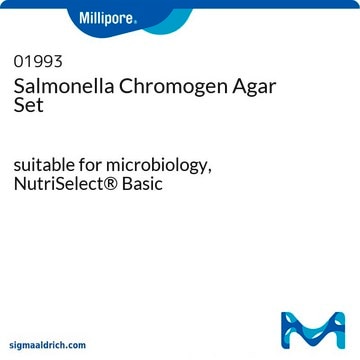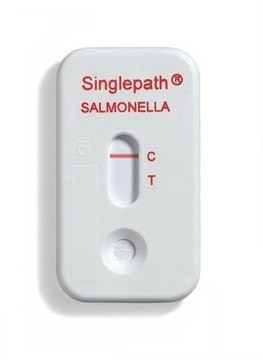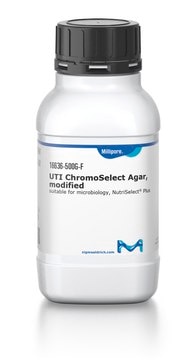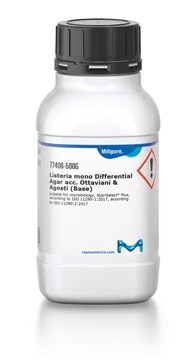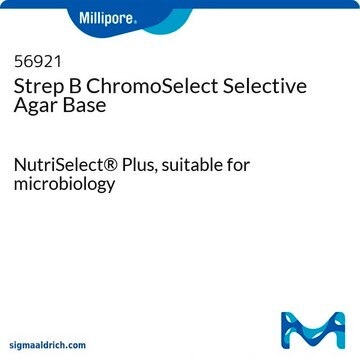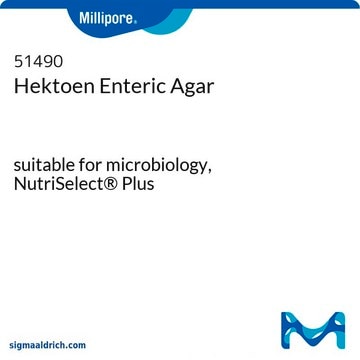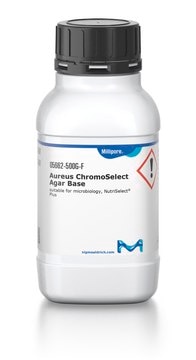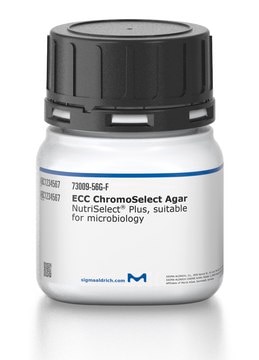05538
Salmonella ChromoSelect Agar, Improved
suitable for microbiology, NutriSelect® Plus
Synonym(s):
Salmonella Agar ChromoSelect, Improved
About This Item
Recommended Products
sterility
non-sterile
Quality Level
form
powder
shelf life
limited shelf life, expiry date on the label
composition
agar, 12.0 g/L
chromogenic mixture, 3.25 g/L
peptone special, 8.0 g/L
sodium deoxycholate, 1.0 g/L
yeast extract, 2.0 g/L
manufacturer/tradename
NutriSelect® Plus
final pH
7.3±0.2 (25 °C)
application(s)
clinical testing
environmental
food and beverages
water monitoring
microbiology
storage temp.
2-8°C
suitability
selective and differential for Escherichia coli
selective and differential for Salmonella spp.
selective and differential for coliforms
Related Categories
Application
Preparation Note
Footnote
The designations basic, plus, or prime are added to indicate the quality control level, from basic quality control to standard QC plus to prime for full regulatory compliance.
Legal Information
wgk_germany
WGK 3
flash_point_f
Not applicable
flash_point_c
Not applicable
ppe
Eyeshields, Gloves, type N95 (US)
Choose from one of the most recent versions:
Certificates of Analysis (COA)
Sorry, we don't have COAs for this product available online at this time.
If you need assistance, please contact Customer Support.
Already Own This Product?
Find documentation for the products that you have recently purchased in the Document Library.
Customers Also Viewed
Articles
Selective media enable faster results and visual confirmation for the detection, identification, and enumeration of microorganisms
Salmonella contamination is the second leading cause of food-borne illness worldwide. Controlling outbreaks of Salmonella is an important task for food regulators, restaurants and the food industry in general. The Salmonella family includes over 2,300 serotypes of bacteria, but two types, Salmonella enteritidis and Salmonella typhimurium, are responsible for about half of all human infections. Most outbreaks of Salmonella are traced back to dairy, poultry and meat products, but Salmonella can grow on nearly any food. Chicken, eggs and their derivative products are particularly high risk.
Our team of scientists has experience in all areas of research including Life Science, Material Science, Chemical Synthesis, Chromatography, Analytical and many others.
Contact Technical Service